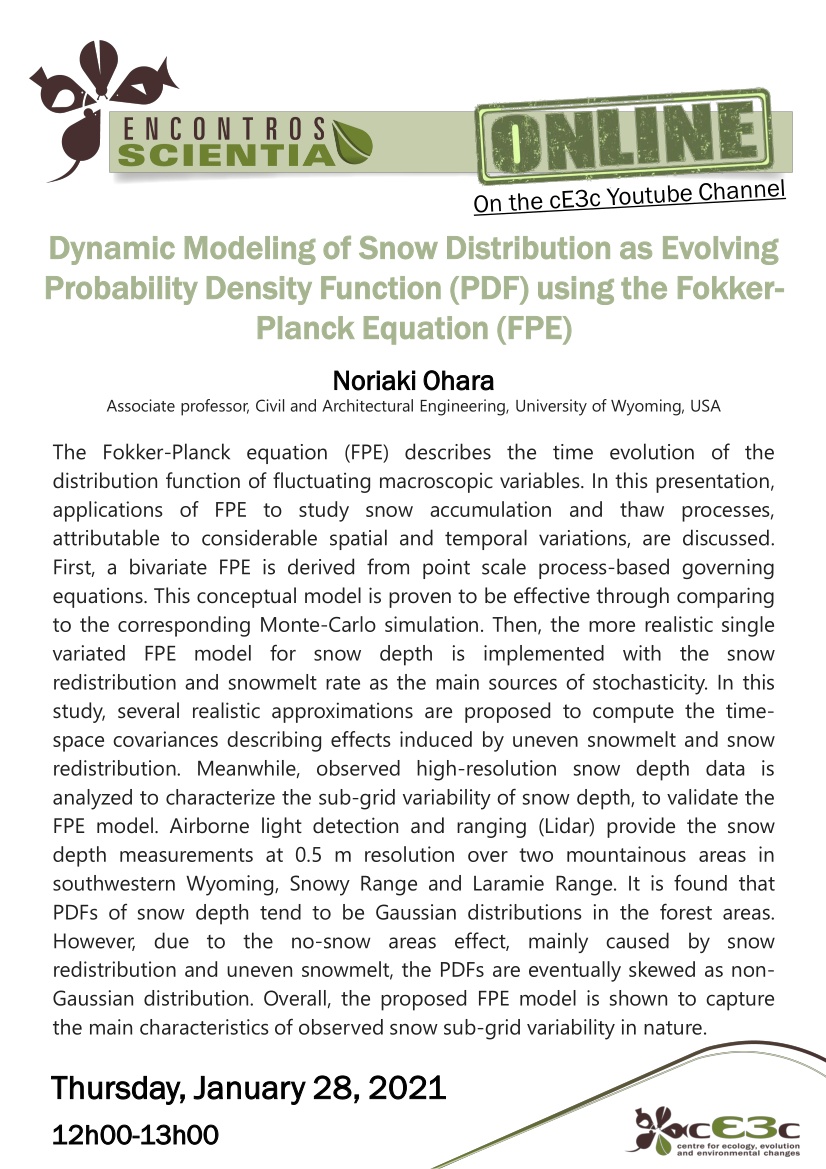Dynamic Modeling of Snow Distribution as Evolving Probability Density Function (PDF) using the Fokker-Planck Equation (FPE)
Noriaki Ohara
Associate Professor, Civil and Architectural Engineering, University of Wyoming, USA
The Fokker-Planck equation (FPE) describes the time evolution of the distribution function of fluctuating macroscopic variables. In this presentation, applications of FPE to study snow accumulation and thaw processes, attributable to considerable spatial and temporal variations, are discussed. First, a bivariate FPE is derived from point scale process-based governing equations. This conceptual model is proven to be effective through comparing to the corresponding Monte-Carlo simulation. Then, the more realistic single variated FPE model for snow depth is implemented with the snow redistribution and snowmelt rate as the main sources of stochasticity. In this study, several realistic approximations are proposed to compute the time-space covariances describing effects induced by uneven snowmelt and snow redistribution. Meanwhile, observed high-resolution snow depth data is analyzed to characterize the sub-grid variability of snow depth, to validate the FPE model. Airborne light detection and ranging (Lidar) provide the snow depth measurements at 0.5 m resolution over two mountainous areas in southwestern Wyoming, Snowy Range and Laramie Range. It is found that PDFs of snow depth tend to be Gaussian distributions in the forest areas. However, due to the no-snow areas effect, mainly caused by snow redistribution and uneven snowmelt, the PDFs are eventually skewed as non-Gaussian distribution. Overall, the proposed FPE model is shown to capture the main characteristics of observed snow sub-grid variability in nature.
Thursday, January 28, 2020, at 12h00-13h00 (Lisbon, Portugal time)
ONLINE, on our YouTube channel, here: https://youtu.be/RzawJPlxkbk

